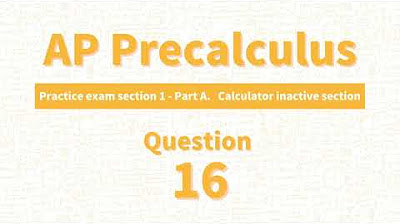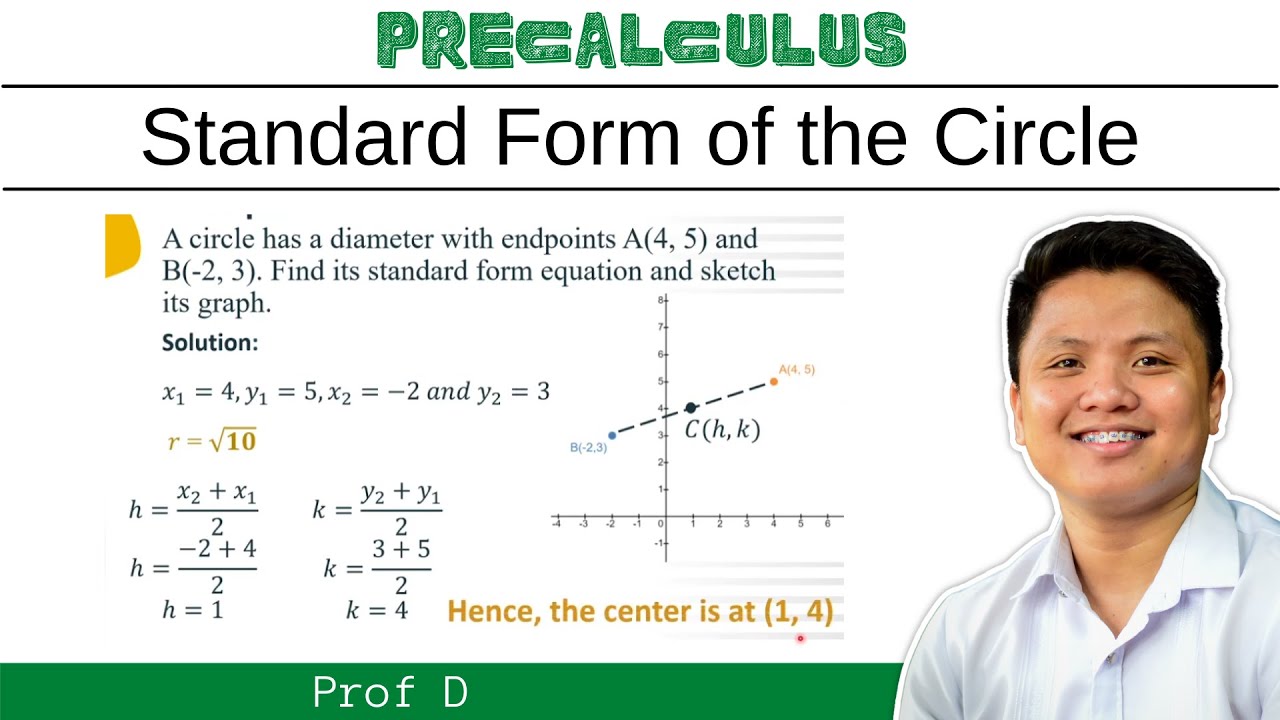INTERESTING JEE Advanced Problem
TLDRThis video script explores a complex problem involving electric fields and geometry, focusing on an equipotential circle formed by two point charges, one at the origin and the other at (2,0). The task is to determine the circle's radius and center. By equating the potentials from both charges and simplifying the equation, the script arrives at the equation of a circle with a radius of √3, centered at (3,0). The explanation demonstrates the beauty of solving problems in advanced physics, particularly in rotational physics.
Takeaways
- 🔋 The problem involves two point charges and an equipotential circle with a radius 'r'.
- 📍 One charge is at the origin, and the other is at the coordinates (2, 0).
- ⚖️ The equipotential circle is such that the potential from both charges at any point on the circle sums to zero.
- 📐 The distance 'd1' from a general point on the circle to the first charge is the square root of (x^2 + y^2).
- 📏 The distance to the second charge is calculated similarly but with the x-coordinate adjusted by subtracting 2.
- 🌐 The potential from the first charge is proportional to -kq/d1, and from the second charge is kq/d2.
- ✖️ The potentials are set to cancel each other out, leading to an equation involving x and y coordinates.
- 🔍 Cross-multiplication simplifies the equation to a form that eliminates the square roots.
- 📉 After squaring both sides, the equation is expanded and simplified to resemble the general form of a circle's equation.
- 🔄 Completing the square for both x and y terms leads to the identification of the circle's equation: (x - 3)^2 + y^2 = 3.
- 📌 The circle has a radius of √3 and is centered at the point (3, 0).
Q & A
What is the problem described in the video script about?
-The problem is about finding the radius and center of an equipotential circle formed by two point charges in an electric field.
What is the significance of an equipotential circle in this context?
-An equipotential circle represents a locus of points where the electric potential is the same due to the influence of the two point charges.
Where are the two point charges located according to the script?
-One point charge is located at the origin, and the other is at the coordinate (2, 0).
What is the relationship between the potential from both charges at any point on the equipotential circle?
-The resultant potential from both charges at any point on the equipotential circle is equal to zero.
How is the distance to the first charge calculated in the script?
-The distance to the first charge, denoted as \( d_1 \), is calculated using the Pythagorean theorem as \( \sqrt{x^2 + y^2} \).
What is the formula for the potential from the first charge?
-The potential from the first charge is given by \( k \cdot \frac{-q}{\sqrt{x^2 + y^2}} \), where \( k \) is a constant and \( q \) is the charge.
How is the potential from the second charge related to the distance from it?
-The potential from the second charge is \( k \cdot \frac{q}{\sqrt{(x-2)^2 + y^2}} \), taking into account the charge \( q \) and its distance from the point.
What is the equation that results from setting the sum of potentials from both charges to zero?
-The equation is \( \frac{1}{\sqrt{3}} \cdot \frac{(x-2)^2 + y^2}{\sqrt{x^2 + y^2}} = 1 \), which simplifies to a relationship between \( x \) and \( y \) coordinates.
What is the final equation derived for the equipotential circle?
-The final equation is \( (x-3)^2 + y^2 = 3 \), which represents a circle with a radius of \( \sqrt{3} \).
What does the final equation indicate about the center and radius of the equipotential circle?
-The final equation indicates that the equipotential circle is centered at \( (3, 0) \) with a radius of \( \sqrt{3} \).
What is the method used to simplify the equation and find the circle's equation?
-Cross-multiplication, squaring both sides, and then rearranging terms to form a standard circle equation is used to simplify and find the circle's equation.
Outlines
🔋 Electric Field and Geometry Problem
This paragraph discusses a physics problem involving electric fields and geometry. It describes a scenario with two point charges, one at the origin and the other at (2,0), forming an equipotential circle with a radius 'r'. The task is to find the radius of this circle and its center. The explanation involves calculating the potential at any point on the circle from both charges, setting up an equation where the sum of the potentials equals zero. The potential from each charge is represented by a formula involving constants 'k' and 'q', and distances from the point to each charge. The problem is solved by equating and simplifying the expressions, eventually leading to the equation of a circle, which is then factorized to find the center at (3,0) and the radius as √3.
📚 Introduction to Rotational Physics
The second paragraph transitions to a different topic, rotational physics, which the speaker finds interesting. It suggests that there is another video available that covers problems in rotational physics, presumably with the same level of complexity and interest as the electric field problem. The speaker encourages viewers to check out that video for further exploration of advanced physics concepts.
Mindmap
Keywords
💡Electric Fields
💡Geometry
💡Point Charges
💡Equipotential Circle
💡Potential
💡Distance
💡Cross Multiplication
💡Square Roots
💡Equation of a Circle
💡Factorization
💡Rotational Physics
Highlights
The problem involves finding the radius and center of an equipotential circle formed by two point charges.
One point charge is placed at the origin, and the other at the coordinate (2,0).
The resultant potential from both charges at any point on the circle equals zero.
The distance from any point on the circle to the first charge is the square root of \( x^2 + y^2 \).
The distance to the second charge is calculated with the formula \( \sqrt{(x-2)^2 + y^2} \).
The individual potentials from each charge are summed to equal zero on the equipotential surface.
The potential from the first charge is represented by \( -kq / \sqrt{x^2 + y^2} \).
The potential from the second charge is \( kq / \sqrt{(x-2)^2 + y^2} \) where the charge is \( q / \sqrt{3} \).
By setting the sum of potentials to zero, a relationship between distances to both charges is established.
The equation simplifies to \( \frac{1}{\sqrt{x^2 + y^2}} = \frac{\sqrt{3}}{\sqrt{(x-2)^2 + y^2}} \).
Cross-multiplication leads to an equation without square roots.
The equation is expanded to \( x^2 + y^2 = 3(x-2)^2 + 3y^2 \).
Simplifying the equation results in \( 2x^2 - 12x + 3y^2 + 12 = 0 \).
Dividing by 2 and rearranging terms gives \( (x-3)^2 + y^2 = 3 \).
The final equation represents a circle with a radius of \( \sqrt{3} \) centered at (3,0).
The problem showcases interesting applications of geometry in electric fields.
The solution involves a combination of algebraic manipulation and understanding of electric potential.
The video concludes with a teaser for a problem on rotational physics.
Transcripts
Browse More Related Video

PROBLEM SOLVING INVOLVING CIRCLES

EQUATION OF CIRCLE IN STANDARD FORM | PROF D

AP Precalculus Practice Exam Question 16

PROBLEM SOLVING INVOLVING CIRCLES

How to find the standard form of the circle | Circle | Conic Section | Pre-Calculus

How to find the radius when the area and circumference are changing at the same rate
5.0 / 5 (0 votes)
Thanks for rating: